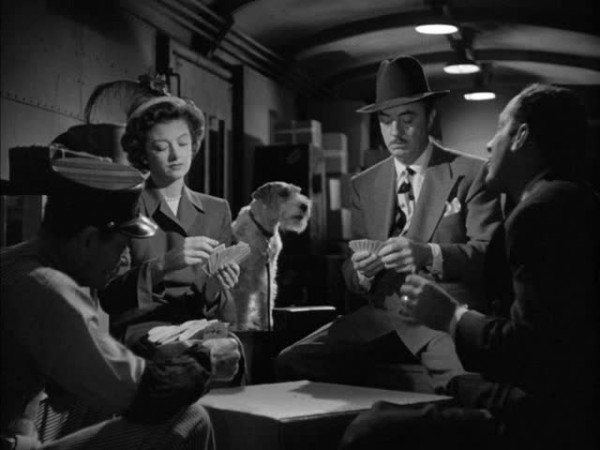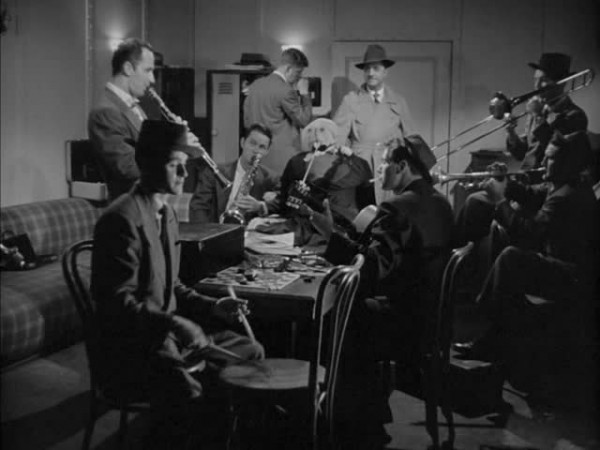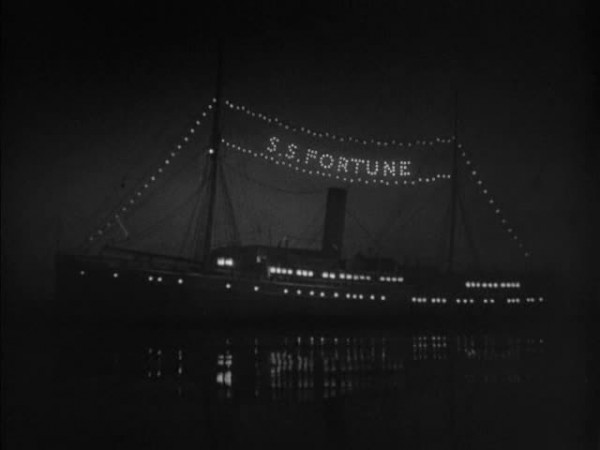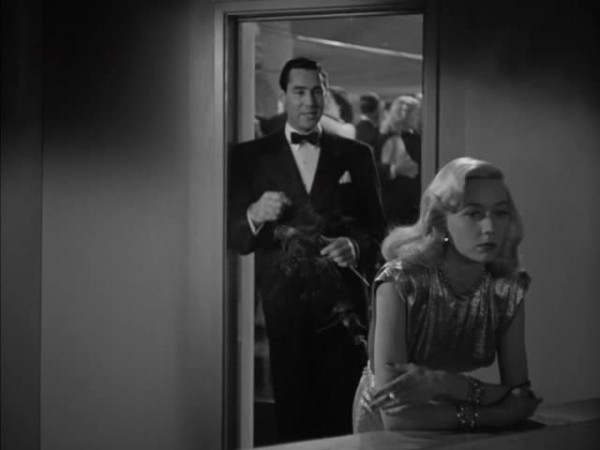
The Thin Man

1934
Screenplay by Albert Hackett and Frances Goodrich
Based on The Thin Man by Dashiell Hammett
Directed by W. S. Van Dyke

Of all the old school detective films I’ve watched (and I’ve watched quite a few), the most enduringly entertaining detective series is by far the Thin Man films, headed by the irreplaceable William Powell and Myrna Loy as Nick and Nora Charles. The married couple quip and drink their way through complicated murder mysteries and have a good time while doing so. The mysteries are top notch, the chemistry between Powell and Loy is legendary, the guest stars put in powerful performances, and there is plenty of danger and gags to keep the fun and excitement at a steady pace.
Nick and Nora Charles have since embedded themselves in pop culture, becoming a mystery archetype with similarly premised shows and films. There is even occasionally the dreaded remake rumors, though nothing will replicate the chemistry of William Powell and Myrna Loy.
The Thin Man films are among the first series of classic films I tracked down and watched the whole sequence of back when I was just starting out as a cinephile (along with the Hope/Crosby/Lamour Road movies and the Marx Brothers), so the films have a nostalgic connection for me. But they’re also pretty darn good regardless of memory enhancement, even if the series begins to drag a bit with the final two films.
As everyone who is anyone knows, the “Thin Man” of the title refers not to Nick Charles, but to the murdered victim, Clyde Wynant. Audiences soon came to refer to Nick Charles as the Thin Man, so the name stuck through all the sequels and the television series. The Thin Man was the last of five novels by Dashiell Hammett, who did story work on the next two Thin Man films (edited versions of these stories were published after his death). Hammett was sick with TB, and focused his career on screenwriting and political activism before joining the Army in World War 2 (having pulled strings to get enlisted). He later was jailed and became a victim of the Hollywood Blacklist due to his left-leanings, and died of lung cancer in 1961.

Coming out in 1934, The Thin Man appears right as the Hays Production Code was beginning to get enforced more vigorously. Of the six movies, it has the most dirty jokes and references that the other films could only dream of using. But there is still plenty of things that seem done just to keep people from panicking, such as Nick and Nora sleeping in separate beds (as they do in all six movies!) One wonders just how Nick Jr. was conceived, though they did spend an awful lot of time together in tiny train cars, so there’s that answer!
Nick Charles is a former detective who seems to have worked out of both New York City and San Francisco, and seemingly solved every case that ever happened on both coasts. Thanks to his skills, everyone knows him, from the cops to a colorful cast of characters of the criminal persuasion. You see, Nick is such a gentleman that he gives them all square deals instead of treating them like criminals, and most of them were proud to have been caught by him. Thus, when trouble is afoot, everyone seems to assume he’s going to help crack the case. Everyone except Nick Charles, that is! But that reluctance doesn’t last long, and we’re soon off to the races!
Nora Charles was born into money, a Nob Hill heiress (a neighborhood of San Francisco where the moneyed elite settled in the late 1800s) who married Nick out of love, and because the couple are perfect for each other. Instead of one personality dominating, Nora easily keeps up with Nick with the zingers, and often with the drinking. Nora even tries her hand at detectiving, usually over Nick’s objections. Occasionally she ends up getting into trouble, but Nick is on hand to bail her out (or occasionally she bails him out!), and often she helps find additional clues for the puzzle.
The final main character of the Thin Man features is Asta the dog, a male wire fox terrier. Asta is played by a canine actor named Skippy, who appeared in several other films such as The Awful Truth and Bringing Up Baby. Skippy eventually just became known as Asta. There is conflicting information on how many Thin Man films feature Skippy and how many feature replacement dogs, but the original Asta is for sure in the first two films, and definitely replaced for the last two films. Skippy commanded a huge salary for the time, $250 a week. The Asta on the Thin Man tv series was reportedly a grandchild of the original. In the books, Asta is a female schnauzer. Asta is a mini canine detective of his own, finding clues when out with Nick, though Asta does destroy evidence on at least one notable occasion. Asta has a bark worse than his bite, occasionally being frightened by kittens and hiding during danger. Asta got a family in After the Thin Man, which consists mainly of visual gags and his wife having already found someone who sticks around to be with, culminating with Asta abandoning them for a life of jet-setting with the Charles.

The Thin Man came out in the heyday of the Great Depression, and Nick and Nora are running around with money to spare, living it up. Films had become a means of escape, and William Powell and Myrna Loy are just so charming together that you don’t mind that they’re rich. Powell previously played an aristocratic detective named Philo Vance in a series of films (the original trailer for The Thin Man has Powell’s Philo Vance introducing Powell’s Nick Charles) Director Woody Van Dyke had to fight to get his cast, using Powell’s prior role as leverage and fighting for Myrna Loy, which meant production had to be rushed so it would finish in time for a film the studio wanted to use Loy for.
Like many good mystery films, the story is not about the mystery so much as the couple and the characters. Thus, Nick and Nora flying zingers back and forth while having a good time and going with the flow make for an engrossing viewing experience, and that’s helped by the strong casts of supporting characters, both humorous and dangerous, and even four-legged such as Asta the dog. Powell and Loy appeared together in 14 films, six of them being Thin Man entries. The couple was so associated with their wonderful chemistry each other onscreen that people thought they were actually married in real life, leading to a few awkward situations if an actual significant other was around.
The Thin Man became a surprise hit, which lead to a string of sequels. Dashiell Hammett contributed stories to the first two sequels, and Van Dyke directed all of the pre-war Thin Man movies (he died in 1945). The series lost its oomph with the last two entries, but was revitalized in the 1950s as a television series (including an episode featuring Robby the Robot!) and occasionally we get a revival threatened. The concept is one that would lend itself to a great modern television series, it would just require two leads with explosive chemistry to pull it off.

I have watched a number of older detective series, and they harken back to the days when you could just barge into people’s homes and do all sorts of unsavory stuff. There were no CSI labs, and there is plenty of detectives messing up crime scenes by moving bodies, touching evidence, or “borrowing” clues for later. Yet there are also references to labs, showing there was some actual forensics work going on, even if the movies gloss over all of it. After wall, we got to have the big conclusion where Nick explains the entire crime to a crowded room of suspects only to reveal the murderer at the last second, that doesn’t really work if an out of date DNA sequencer matches a suspect before Nick’s decided if he’s even going to get off the couch and go detectiving.

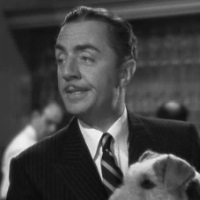 |
Nick Charles (William Powell) – Retired detective now living the good life with the love of his life. Gets dragged back into the detective business and breaks the case, because he’s just that good at it. A big fan of drinking.
|
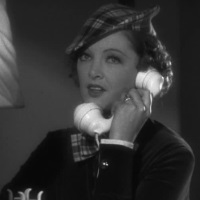 |
Nora Charles (Myrna Loy) – Wealthy heiress who married Nick out of love, and is the only one who can keep up with him both on the drinking and the quipping front. Encourages him to get back into detecting because she thinks it will be fun. |
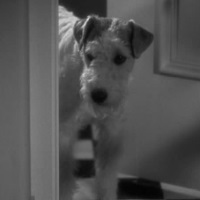 |
Asta (Skippy) – The strong-willed dog of the Charles, who is both a brave finder of clues and a coward when the danger comes out. Enjoys playing with balloons. |
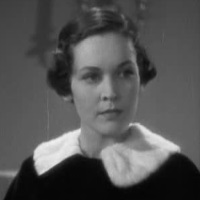 |
Dorothy Wynant (Maureen O’Sullivan) – Daughter of Clyde Wynant, who goes missing and then is accused of murder. She is set to be married, but after the troubles with her father she has a breakdown and begins to display a wild streak. Knew Nick from when she was a child and her father hired him. |
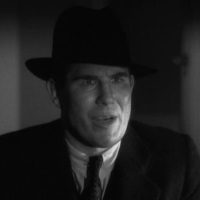 |
Lieutenant John Guild (Nat Pendleton) – Lead detective on the case who is more than happy to have Nick Charles help out, though he has his own theory and keeps finding evidence that supports his theory, instead of looking at it from an objective point of view. |
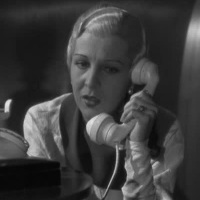 |
Mimi Wynant Jorgenson (Minna Gombell) – Former wife of Clyde Wynant, now married to Chris Jorgenson (Cesar Romero!), who doesn’t feel the need to work. Usually asks Clyde for money. Tries to cover up for him when she finds Julia Wolf’s body. Is the mother of Clyde’s two children, Dorothy and son Gilbert Wynant (William Henry) |
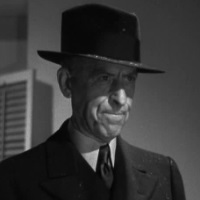 |
Clyde Wynant (Edward Ellis) – The titular Thin Man, who becomes prime suspect number one for a series of murders despite having been missing for several months. But there is more than meets the eye going on here! A cranky inventor who becomes too focused on his work and regularly hides away somewhere to develop new inventions. His marriage ended when he began his affair with his secretary, Julia Wolf (Natalie Moorhead). Both women seem more after Wynant’s money than Wynant himself. |
|

Continue reading →
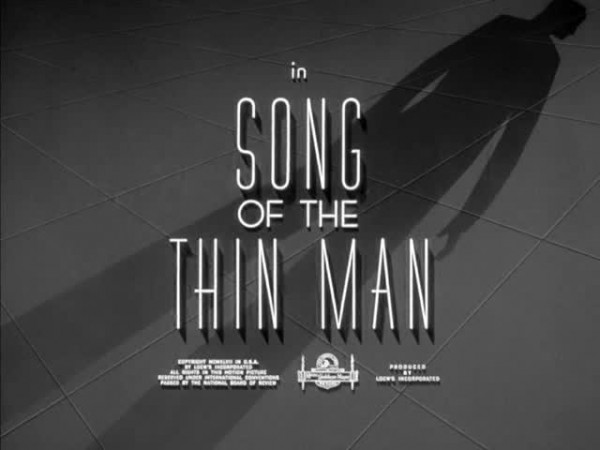
![]()
